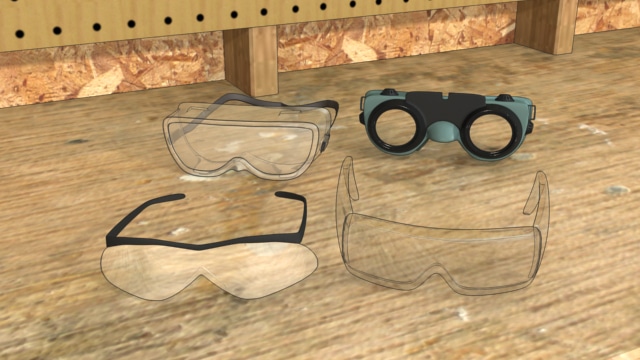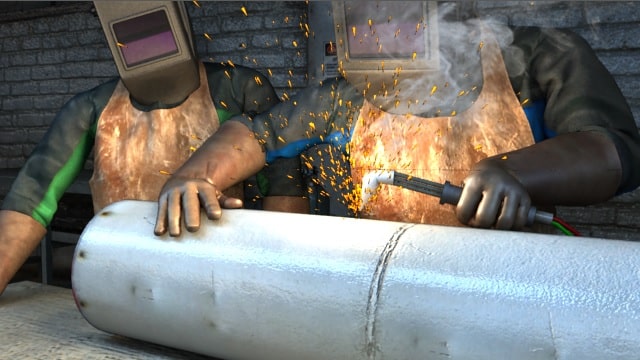




Personal Protective Equipment
In any workplace, personal protective equipment (PPE) is essential for safeguarding workers against injuries and health hazards. This comprehensive PPE training course covers everything you need to know about personal protective equipment, including head protection, eye and face protection, hand protection, foot protection, respiratory protection, and hearing protection. Learn how to effectively use and maintain PPE to ensure optimal safety and compliance with industry standards. This course will help you understand the types of PPE, their intended uses, and the best practices for selecting and using protective equipment.
Request a demoCourse Details
Learning Objectives
- Identify various types of personal protective equipment (PPE) and their uses.
- Explain the purpose of different types of PPE and their role in workplace safety.
- Describe specific PPE requirements for various work conditions and hazards.
- Identify appropriate PPE for specific environments or tasks.
- Differentiate between subclasses of PPE and understand their protection limits.
Specs
| Course Level | Intermediate |
| Languages | English, Spanish, Arabic, Portuguese, Chinese, Dutch, French, German, Italian, Japanese, Korean, Tamil, Polish, Russian, Thai, Czech |
| Compatibility | Audio, Video |
| Based on: | 29 CFR 1910.132: Personal Protective Equipment |
Key Questions
PPE training is essential for enhancing workplace safety by ensuring that employees understand how to properly use and maintain personal protective equipment (PPE). Effective PPE training covers various types of protective equipment, including head protection, eye protection, hand protection, and respiratory protection. By educating workers on the correct use of PPE, its limitations, and compliance with OSHA standards, organizations can significantly reduce the risk of injuries and health hazards, leading to a safer and more compliant work environment.
What is a hard hat?Hard hats provide protection from the impact and penetration of falling or moving objects. There are two main categories of hard hats, Type I and Type II, and each type is divided into three classes. Type I and Type II specifications protect from impacts to the top of the head. Type II specification is newer and provides additional protection from impacts at the front, sides, and back.
What are examples of eye protection?Eye protection includes safety lenses, safety glasses, goggles, and welding goggles.
What does eyewear have to do to be considered safety glasses?To qualify as safety glasses, eyewear must have side-impact protection and meet the ANSI standard for impact protection and shatter resistance. Eyewear that meets this standard will have “Z87” printed or stamped on it.
What are face shields?Face shields are not a direct substitute for eye protection. They help protect the face area from harmful dust, debris, and liquid. Some chemicals and certain operations call for wearing safety glasses or goggles in combination with a face shield.
How is hand protection chosen?Hand protection is made from various materials. Always select the correct type of hand protection by matching it to the anticipated hazard.
What do safety shoes have to include in the United States?Footwear must have impact resistance, compression resistance, metatarsal-impact protection, conductive properties to reduce static electricity, electric hazard protection, static dissipative properties, and puncture resistance.
When is respiratory protection necessary?Respiratory protection is necessary for employees working in areas with insufficient oxygen or where atmospheric contaminants such as dust, smoke, gas, vapor, sprays, or mists are present. Without respiratory protection, these health hazards can lead to serious conditions such as cancer, lung impairment, disease, or even death.
What are two types of hearing protection?Hearing protection includes ear plugs worn inside the ear and earmuffs worn over the ears. In some cases, both may be worn simultaneously.
What is body protective clothing?Body protective clothing provides exposure protection from various hazards, including chemical liquids, molten metals, dust, gases and vapors, and extreme temperatures. Examples include disposable suits, chemical protective suits, chemical protective aprons, welding aprons, and heat-resistant turnout gear.
Sample Video Transcript
PPE must fit properly to provide the best protection. It should be comfortable and allow for freedom of movement. Always inspect your PPE before use and never use defective or damaged equipment. Carefully select the most effective PPE based on the environment in which you will be working. This training will cover the various types of PPE, the limitations of each type, and OSHA standards published for each type.
Additional Resources
- U.S. Department of Labor’s Occupational Safety & Health Administration (OSHA) – www.osha.gov
- OSHA Safety & Health Training Topics – www.osha.gov/SLTC/personalprotectiveequipment/
- OSHA Fact Sheet – www.osha.gov/OshDoc/data_General_Facts/ppe-factsheet.pdf
- National Institute for Occupational Safety and Health (NIOSH) – www.cdc.gov/niosh/
- NIOSH Topics – www.cdc.gov/niosh/ppe/
Course Applies To
Demos + Pricing
Learn more about our courses, get pricing, and see our platform.











